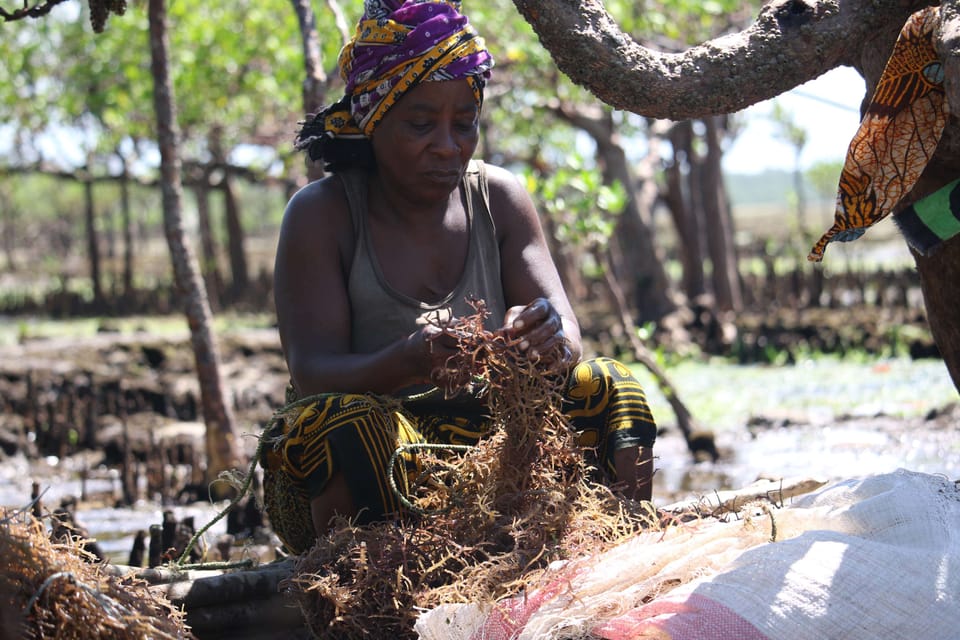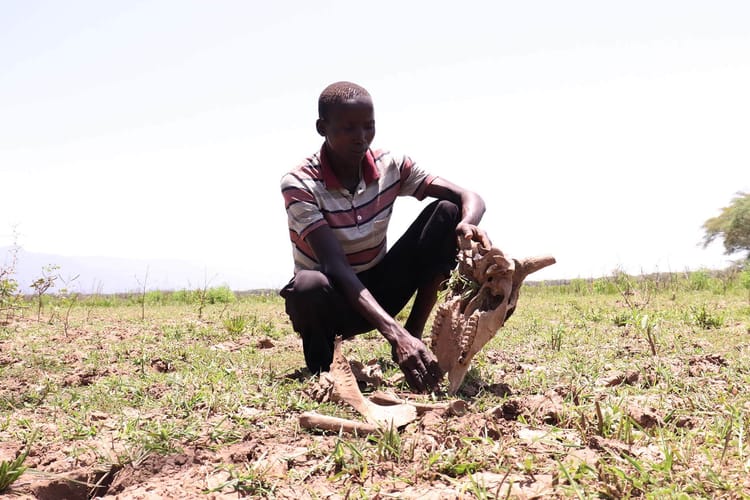An ocean of opportunity

A thriving trade in seaweed is fast taking root on the seabed of the East African coast, effectively becoming a commercial venture of choice for many communities living along the Indian Ocean. Despite the trade being driven by demand from China, Ireland, South Korea, Japan and Malaysia, the plant has also found a market locally.
East Africans are using seaweed as a vegetable in their diet, as well as a base for soups and as a dried ingredient added to the production of cookies.
Apart from use in foodstuffs, seaweed has many other applications, such as the manufacture of cosmetics, soaps, industrial gum and fertilizer.
Farming seaweed
The profitability potential of seaweed has seen the local community organize themselves into a farmer's group, solely for the cultivation of the plant.
"I am able to cater for my financial needs since I began growing the seaweed, something which I could not do from ordinary agriculture," said Fatuma Mohamed, chairwoman of Kibuyuni Seaweed Farmers in Kenya.
The leading marine research institute in the region – Kenya Marine Fisheries Research Institute (KMFRI) – has played a major role in creating interest among farmers. The institute has constructed a drying warehouse, which has increased their yield by up to 60 percent. In the past, farmers would experience losses due to frequent rotting.
Overall, the seaweed farmers in Kibuyuni have already exported 100 tons of the plant in the last three months and another 100 tons are expected to be exported in the next two months, according to the KMFRI.
The increasing demand for seedlings has seen the launch of a study into a new high-yielding species known as kappaphycus. These efforts are geared toward boosting production levels, thereby assisting farmers to meet the growing demand.
Kappaphycus, which was imported from neighboring Tanzania, is said to produce twice as much seaweed gel as eucheuma denticulatum species, currently being cultivated by farmers.
"It is targeted at the food industry as it can be used in most foodstuffs, unlike eucheuma denticulatum, which has less food value," said David Mirera, Senior Research Scientist at the KMFRI.
"We are growing the new species on floating racks in the sea for experimentation and study purposes before releasing it to farmers for commercial production," said Mirera, who is also Assistant Director of the Mariculture Department at the Institute.
Eucheuma denticulatum can grow in shallow waters of 0.5-1 meter in depth at low tide. However, the new experimental species thrives in relatively deep waters of up to 8 meters.
The water temperature at these depths does not vary greatly, which is conducive for the farming of the new species.


Industry development
The seaweed industry dates back to the 1980s in Kenya on an experimental scale, but failed to pick up momentum. The same cannot be said of the industry in Tanzania, which fully embraced this new venture. It has since grown in leaps and bounds in that country.
It is only as recently as 2009 that Kenya revived its interest in the industry by initiating earnest research into seaweed cultivation in addition to training farmers on how to grow this marine plant.
Trials were initiated in the Kibuyuni area of Kwale County, an hour's drive from Mombasa, Kenya's second-largest city. The project has since spread to five other locations along the coast.
Each farmer is allocated an area in the sea, where they place stakes on the ocean floor, spaced 50 cm apart for a distance of 10 meters. Ropes are then tied to these stakes, on which seaweed seedlings are carefully suspended during low tide. After approximately two months, the seaweed is ready for harvesting.
Proceeds from cultivating the versatile plant has enabled Usi Bakari to build his family a house in Kibuyuni.
"I am able to support my younger siblings to go to school, thanks to this farming," said Bakari, who began cultivating seaweed in 2013.
KMFRI is now undertaking a mapping exercise along the Kenyan coastline to establish more sites for growing seaweed in order to involve even more farmers and increase production further.
"We are undertaking research on the best sites to grow seaweed so that many [more] farmers can take up the practice and increase production," said Mirera.


Ecological benefits
At the moment, farmers are only able to each manage between 100 and 200 ropes of seaweed farming. Very few of them have been able to reach the targeted 300 ropes for maximum yield and profits.
"This is because farmers need to put in a lot of manpower to raise 300 ropes of seaweed," said Mirera, suggesting that a larger workforce is needed.
Prices for a kilogram of dry seaweed vary between $0.22 and $0.25, meaning a farmer could profit by about $250 from a ton of seaweed, according to Mohamed.
This amount is seen high for rural farmers as the cultivation requires no fertilizer, weeding or any other input once ropes are hung.
But according to Mirera, the export value of the plant is a closely guarded secret, although he believes the rate could be as high as $1.20 per kg on the international market.
The price of some of the seaweed products is also high. A bar of soap, for example, sells for about $3 - almost twice as much as a larger bar of regular soap.
And there is another important benefit from growing seaweed. It provides a breeding ground for fish.
"It is like a trap. So fishermen now don't have to go too far to look for fish," said Norah Magangi, a technician at KMFRI, who trains farmers how to grow the plant.
One of the biggest challenges facing this venture is the rise in surface sea water temperature close to shore. This is why the research focus is directed at the new kappaphycus seaweed species, which favors cool waters farther out to sea.
Meanwhile, farmers are having challenges with various other aspects of seaweed farming. Issues such as ropes breaking apart, causing the seaweed to be carried off by waves, and transportation of the harvested crop are particularly troublesome. Personal injury is also a factor, as without the proper gear to operate in the waters, farmers can easily step on a stone fish or a sea urchin, injuring their feet.
"We are still using sacks to transport the plant from the sea for drying, which is cumbersome," said Bakari. No doubt, technology will be required in future to improve the processes from sea to market. Clearly, Bakari feels the entire process needs to be updated and modernized if farmers are to take full advantage of this abundant seaweed opportunity.
This story was first published on Chinafrica






Member discussion